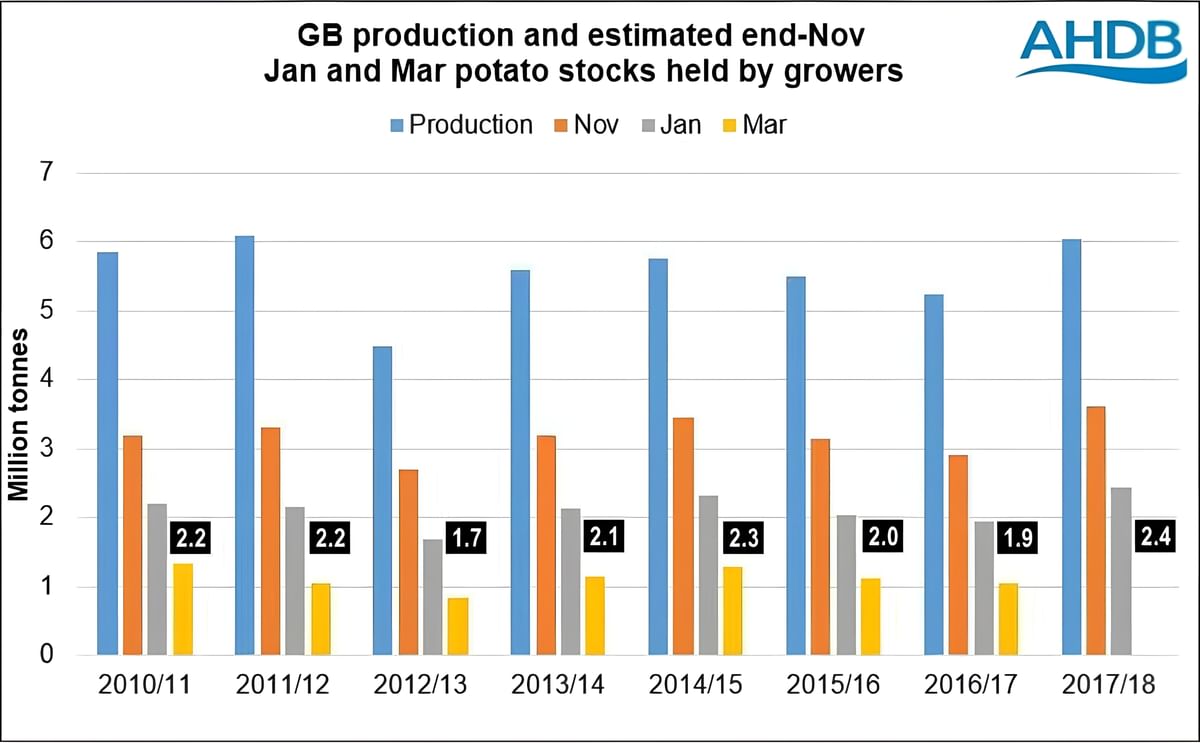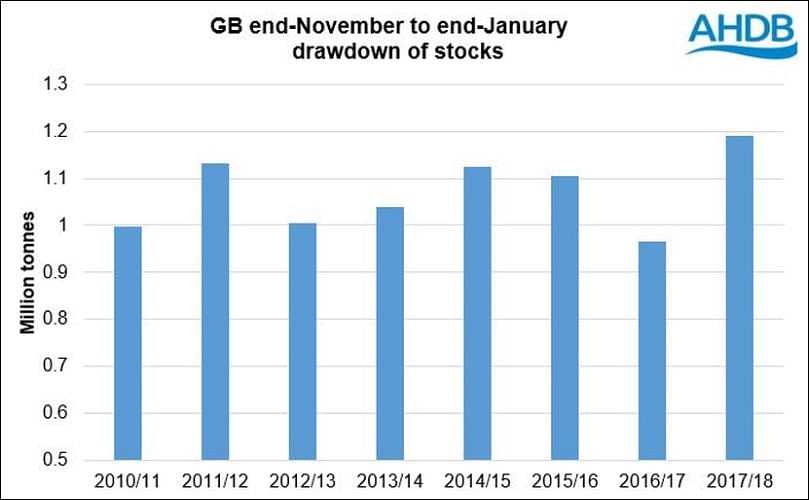Great Britain Potato Production and estimated potato stocks held by growers by the end of November, January (with figures) and March (Courtesy: AHDB Potatoes)
Record amounts of potatoes in stock in Great Britain

Great Britain potato stock levels held by growers are estimated at 2.4Mt as at the end of January. This represents the largest end-January stocks figure since the stocks survey began in 2010.
Estimated at 2.4Mt, the 2017/18 end-January stock estimate represents a 25% year on year increase, 492Kt more than the previous years end-January 2017 estimate. The latest estimate is based on an AHDB survey, covering stocks held by growers and does not include stock held by purchasers.
The high production levels (6.04Mt) this season and subsequent above average end-November stocks, have led, perhaps unsurprisingly, to high end-January stock levels.
The drawdown rate at record pace
While end-January stocks held by growers are the highest since 2010, the rate of drawdown from end-November to end-January has also been at a record pace as shown below
End November to End January drawdown of Potato Stocks in Great Britain
(Courtesy: AHDB Potatoes)
Between the end-November to end-January period, 1.19Mt was drawn from grower’s stores, 226Kt more than seen in the previous end-November to end-January period and 14% higher than the five year average drawdown rate.
One explanation for the drawdown rate is a greater level of waste in this year’s crop. With quality reported as reduced in 2017/18, there has been an increased tonnage requirement to meet specifications, as seen by reports of a higher out grade percentage than usual. In order to fulfil the same finished product requirement, there has therefore been a larger volume requirement from stock.
Additionally, there has been an increase in consumer purchases this marketing season. The volume of fresh potatoes sold were up 3.2% in the 12 weeks to 31 December 17, compared to the same period the previous year. Chilled and ambient processed potatoes also saw increased sales in both value and volume in the period, with crisp sales up 7.8% by volume. (read more here)
However, in terms of stocks as a percentage of production, 60% remained in store at the end of November and 40% of production remained in store at the end of January. The five-year average for production held in stock at the end of November is 58% and 38% for end of January, making this marketing season only 2 percentage points behind the five-year average.
The record production has led to a continued large volume of stocks, with both the end-November and end-January estimates the highest since 2010.
Due to multiple contributing factors, the rate of drawdown between end-November to end-January has been at record levels allowing the percentage of production remaining in stores to be in line with the five year average.
Yet despite this season’s high production, there may be late season supply pressures still to come, as with other high production years like 2011 and 2014. The delayed, wet start to 2018/19 earlies planting could see this marketing season extended, causing a tightening of supplies before the new crop is lifted.







